Hyundai i10 vs Jeep Avenger - Differences and prices compared
Costs and Efficiency:
Price and efficiency are key factors when choosing a car – and this is often where the real differences emerge.
Hyundai i10 has a decisively advantage in terms of price – it starts at 14600 £, while the Jeep Avenger costs 21900 £. That’s a price difference of around 7380 £.
Fuel consumption also shows a difference: manages with and is therefore more efficient than the with . The difference is about per 100 km.
Engine and Performance:
Under the bonnet, it becomes clear which model is tuned for sportiness and which one takes the lead when you hit the accelerator.
When it comes to engine power, the Jeep Avenger has a clearly edge – offering 156 HP compared to 90 HP. That’s roughly 66 HP more horsepower.
In acceleration from 0 to 100 km/h, the Jeep Avenger is clearly perceptible quicker – completing the sprint in 9 s, while the Hyundai i10 takes 11.40 s. That’s about 2.40 s faster.
In terms of top speed, the Jeep Avenger performs minimal better – reaching 194 km/h, while the Hyundai i10 tops out at 175 km/h. The difference is around 19 km/h.
There’s also a difference in torque: Jeep Avenger pulls noticeable stronger with 260 Nm compared to 172 Nm. That’s about 88 Nm difference.
Space and Everyday Use:
Whether family car or daily driver – which one offers more room, flexibility and comfort?
Seats: offers more seating capacity – vs .
In curb weight, Hyundai i10 is slightly lighter – 996 kg compared to 1180 kg. The difference is around 184 kg.
In terms of boot space, the Jeep Avenger offers clearly perceptible more room – 380 L compared to 252 L. That’s a difference of about 128 L.
In maximum load capacity, the Jeep Avenger performs somewhat better – up to 1277 L, which is about 227 L more than the Hyundai i10.
When it comes to payload, Jeep Avenger to a small extent takes the win – 502 kg compared to 423 kg. That’s a difference of about 79 kg.
Who comes out on top?
Overall, the Jeep Avenger shows itself to be wins the duel decisively and secures the title of DriveDuel Champion.
It convinces with the more balanced overall package and proves to be the more versatile choice for everyday use.
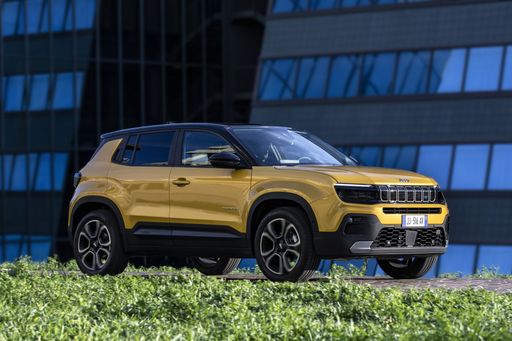 @ Jeep / Stellantis Media
@ Jeep / Stellantis Media
Jeep Avenger
Costs and Consumption
View detailed analysis
Engine and Performance
View detailed analysis
Dimensions and Body
View detailed analysis
Hyundai i10
The Hyundai i10 is a cheeky city car that squeezes big-car confidence into a pocket-friendly package, carving through tight streets with surprising composure and sensible practicality. For buyers after low fuss, sensible equipment and wallet-friendly running costs, it's a smart, no-nonsense pick that makes sense whether you're a first-time driver or need a reliable second car.
details @ Hyundai Motor Company
@ Hyundai Motor Company
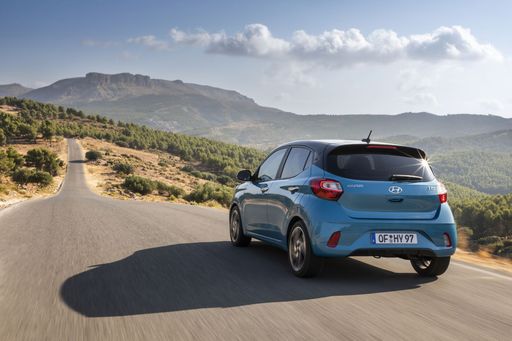 @ Hyundai Motor Company
@ Hyundai Motor Company
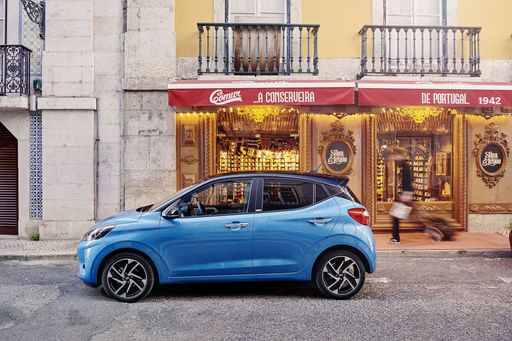 @ Hyundai Motor Company
@ Hyundai Motor Company
 @ Hyundai Motor Company
@ Hyundai Motor Company
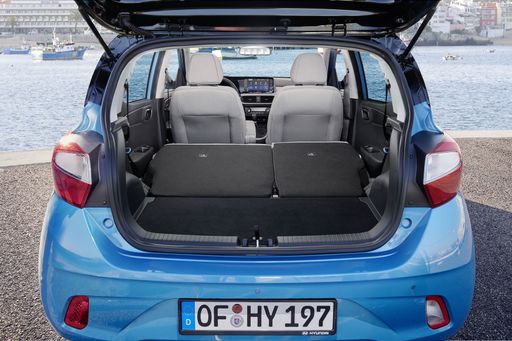 @ Hyundai Motor Company
@ Hyundai Motor Company
Jeep Avenger
The Jeep Avenger shrinks Jeep's boxy, adventurous styling into a city-friendly electric crossover that looks just as at home on tight streets as it does on muddy weekend lanes. It's a savvy pick for drivers who want go-anywhere attitude without the truck-size ego — practical inside, lively around town and ready to tackle a bit of rough stuff when the mood strikes.
details @ Jeep / Stellantis Media
@ Jeep / Stellantis Media
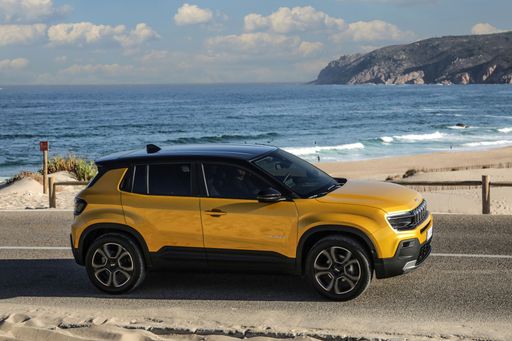 @ Jeep / Stellantis Media
@ Jeep / Stellantis Media
 @ Jeep / Stellantis Media
@ Jeep / Stellantis Media
 @ Jeep / Stellantis Media
@ Jeep / Stellantis Media
 @ Jeep / Stellantis Media
@ Jeep / Stellantis Media
 @ Hyundai Motor Company
@ Hyundai Motor Company
|
 @ Jeep / Stellantis Media
@ Jeep / Stellantis Media
|
|
|
|
Costs and Consumption |
|
|---|---|
|
Price
14600 - 19000 £
|
Price
21900 - 36900 £
|
|
Consumption L/100km
4.9 - 5.5 L
|
Consumption L/100km
4.9 - 5.7 L
|
|
Consumption kWh/100km
-
|
Consumption kWh/100km
15.50 kWh
|
|
Electric Range
-
|
Electric Range
400 km
|
|
Battery Capacity
-
|
Battery Capacity
51 kWh
|
|
co2
110 - 124 g/km
|
co2
0 - 129 g/km
|
|
Fuel tank capacity
36 L
|
Fuel tank capacity
44 L
|
Dimensions and Body |
|
|---|---|
|
Body Type
Hatchback
|
Body Type
SUV
|
|
Seats
4 - 5
|
Seats
5
|
|
Doors
5
|
Doors
5
|
|
Curb weight
996 - 1099 kg
|
Curb weight
1180 - 1520 kg
|
|
Trunk capacity
252 L
|
Trunk capacity
325 - 380 L
|
|
Length
3670 - 3675 mm
|
Length
4084 - 4088 mm
|
|
Width
1680 mm
|
Width
1776 mm
|
|
Height
1480 - 1483 mm
|
Height
1527 - 1541 mm
|
|
Max trunk capacity
1050 L
|
Max trunk capacity
1218 - 1277 L
|
|
Payload
344 - 423 kg
|
Payload
494 - 502 kg
|
Engine and Performance |
|
|---|---|
|
Engine Type
Petrol
|
Engine Type
Electric, Petrol, Petrol MHEV
|
|
Transmission
Manuel, Automatic
|
Transmission
Automatic, Manuel
|
|
Transmission Detail
Manual Gearbox, Automated Manual
|
Transmission Detail
Reduction Gearbox, Manual Gearbox, Dual-Clutch Automatic
|
|
Drive Type
Front-Wheel Drive
|
Drive Type
Front-Wheel Drive, All-Wheel Drive
|
|
Power HP
63 - 90 HP
|
Power HP
100 - 156 HP
|
|
Acceleration 0-100km/h
11.4 - 18.4 s
|
Acceleration 0-100km/h
9 - 10.6 s
|
|
Max Speed
143 - 175 km/h
|
Max Speed
150 - 194 km/h
|
|
Torque
93 - 172 Nm
|
Torque
205 - 260 Nm
|
|
Number of Cylinders
3 - 4
|
Number of Cylinders
3
|
|
Power kW
46 - 66 kW
|
Power kW
74 - 115 kW
|
|
Engine capacity
998 - 1197 cm3
|
Engine capacity
1199 cm3
|
General |
|
|---|---|
|
Model Year
2024
|
Model Year
2023 - 2025
|
|
CO2 Efficiency Class
C, D
|
CO2 Efficiency Class
A, D, C
|
|
Brand
Hyundai
|
Brand
Jeep
|
Is the Hyundai i10 offered with different drivetrains?
The Hyundai i10 is offered with Front-Wheel Drive.
The prices and data displayed are estimates based on German list prices and may vary by country. This information is not legally binding.
